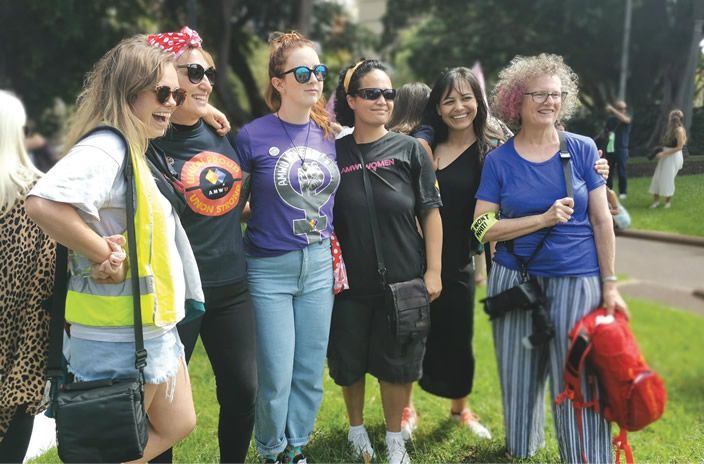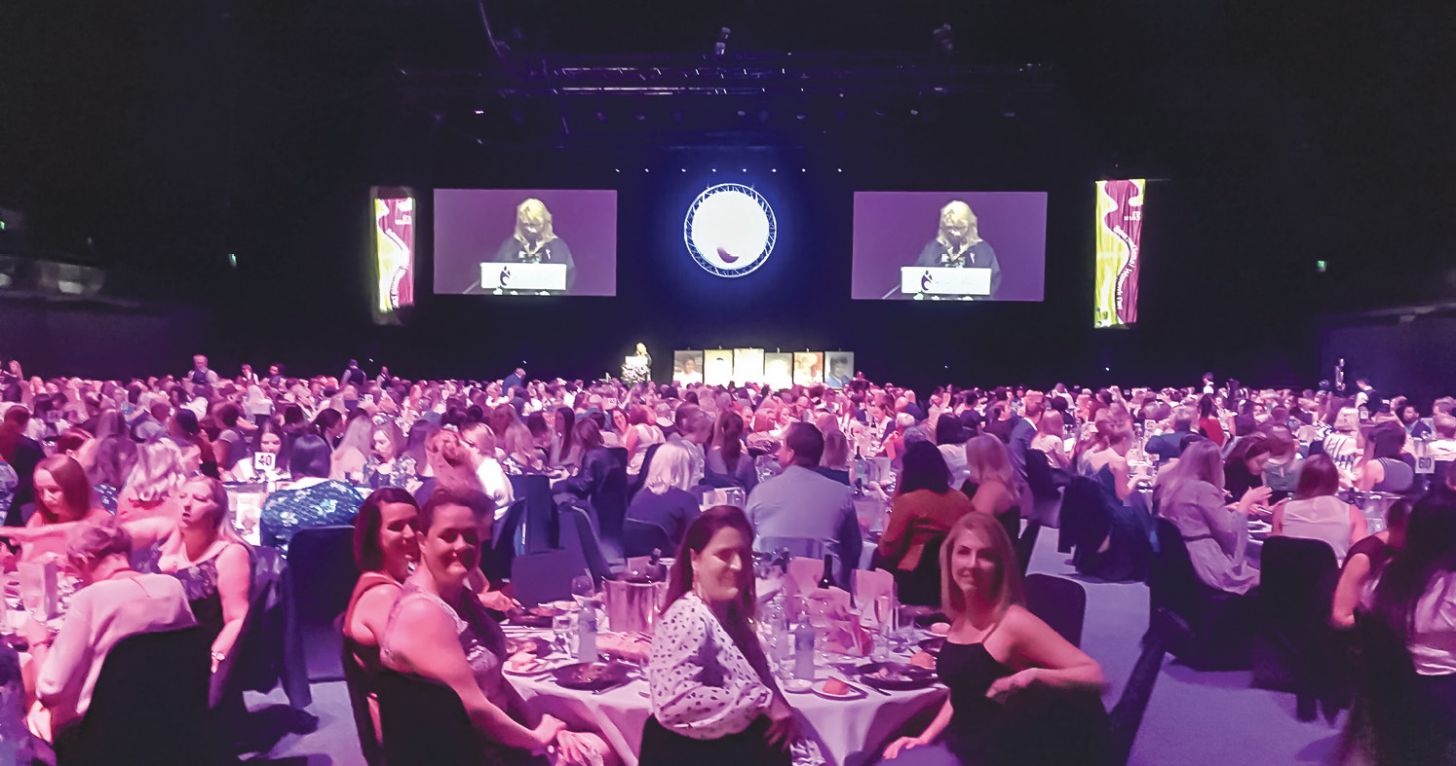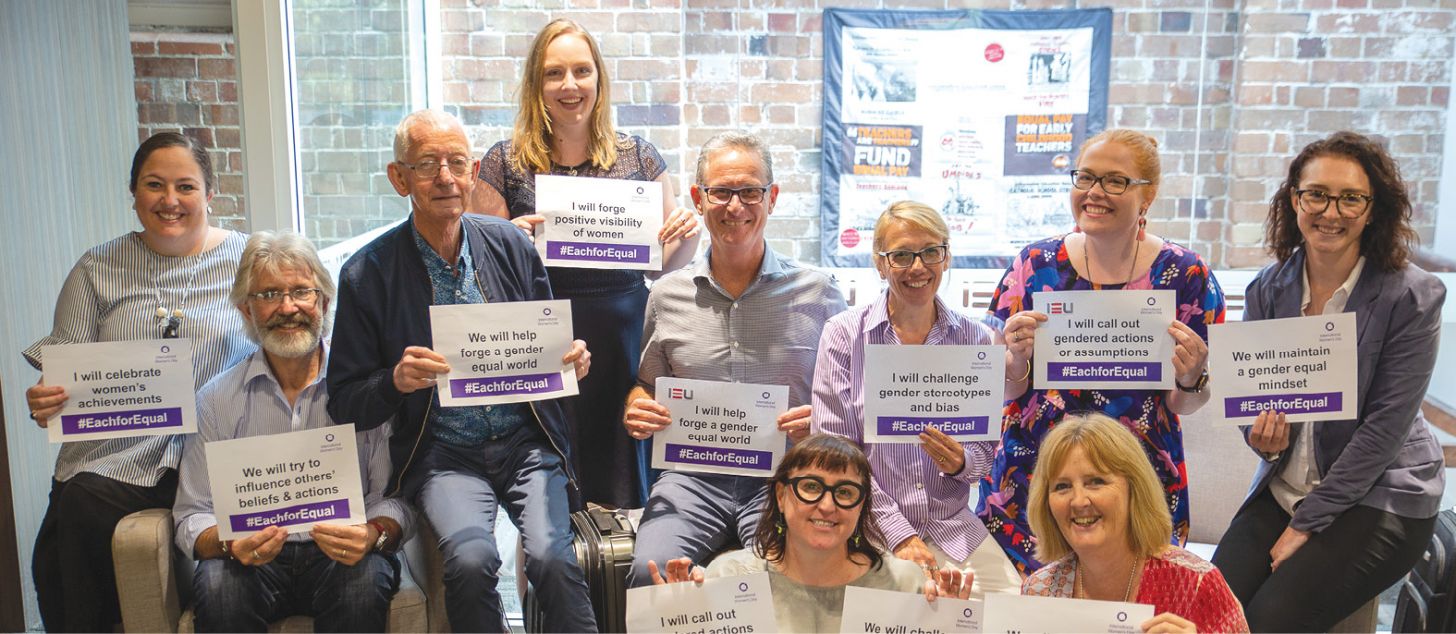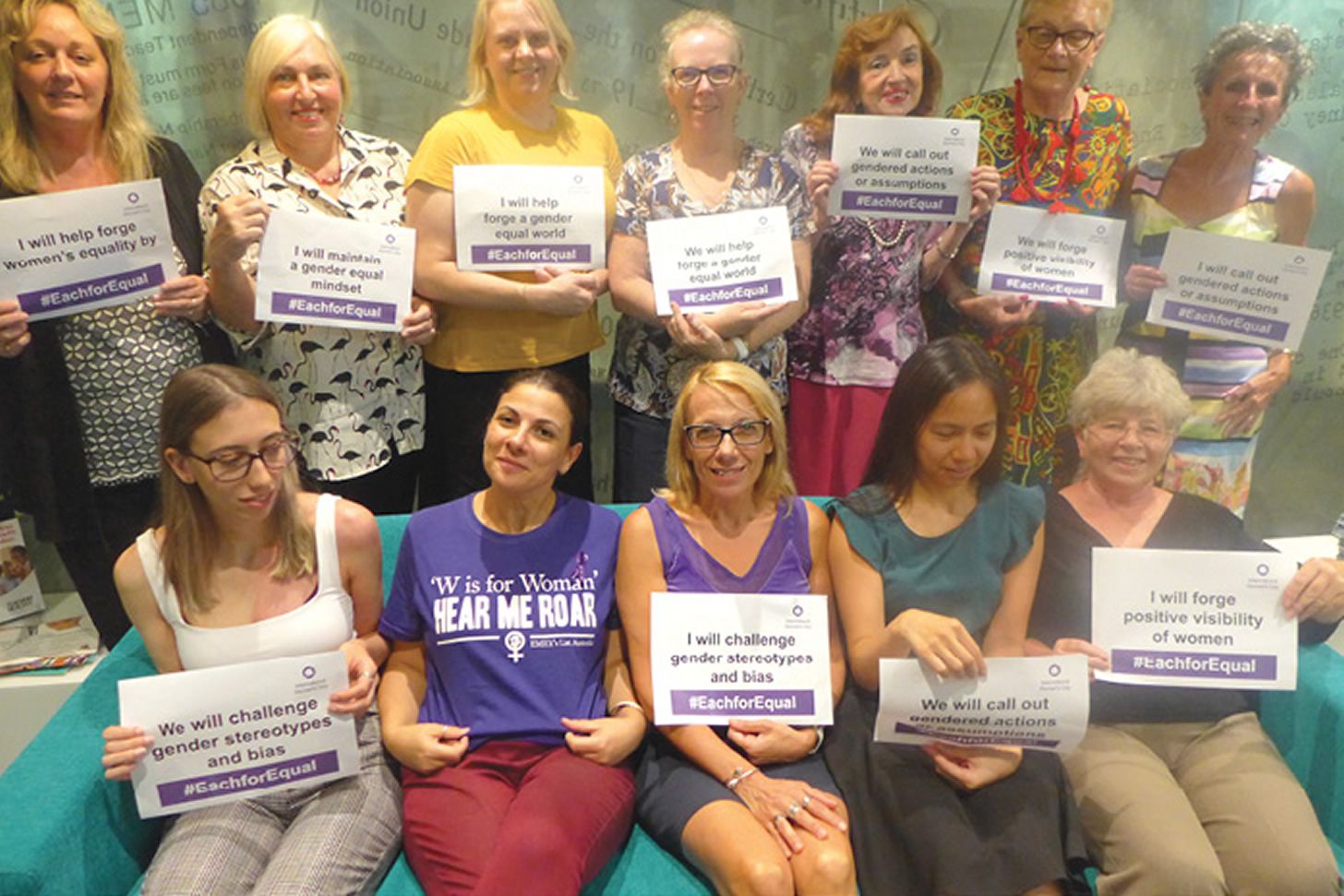The IEU and its members – 76.9% of whom are women – took the opportunity to celebrate progress and focus on the future, writes journalist Monica Crouch.
Culminating in International Women’s Day on 8 March, IEU members and organisers gathered in Bathurst and Parramatta to recognise gains and contemplate the task ahead.
With 131 million girls around the world unable to attend school regularly and gendered violence at the centre of Australia’s national conversation, this was not a time for mincing words.
“Collectively we can take responsibility for change and bring about a more equal world,” said IEUA Assistant Federal Secretary Christine Cooper, in a keynote address at an IWD dinner in Bathurst. “Try making this your feminist agenda: find your why, know your values, use your voice, take action.”
The dinner, attended by about 80 people, including members and students (both girls and boys), was an initiative of the Catholic Education Diocese of Bathurst Diversity and Inclusion Committee.
“I was so impressed with the students,” Cooper said. “They’re highly engaged with the concept of IWD and they’re keen to change the world. They give us hope.”
Those attending matched their words with action, raising funds for Share the Dignity, a charity that supplies pads and tampons to women in need.
End this prejudice
In Parramatta, at the IEU’s intimate “in conversation” series with three high achieving women, the mood was warm and inclusive but the message was ironclad.
“We can’t afford to take our foot off the accelerator,” said Julie Terry, recently retired principal of St Brigid’s at Lake Munmorah on the NSW central coast. “I personally believe that unless we get this right between males and females, any other prejudices will never be resolved.”
Terry had done her homework. “We know that in developing regions there’s a lack of parity for young girls and women in education; poverty disproportionately affects women and girls; and recent statistics show that 720 million girls still marry before the age of 18 – of those, 156 million are under 15,” she said.
Mother to seven children, Terry said that in the early stages of her career, she couldn’t tell her employer when one of her kids was sick, she had to use her sick leave or annual leave. Others nod in recognition. “Thank God we’ve moved on from there,” Terry said.
Two of Terry’s children are severely autistic and need specialised care, which has imbued Terry with great empathy for those who cannot contribute to society in the way it often demands. And two of her five daughters are research scientists, specialising in cancer treatments. Women in STEM is another item on the feminist agenda.
Power to the teacher
Tina Ruello has been a teacher for more than 32 years and a union member for equally as long. A member of the IEU Executive and teacher at Catherine McAuley in Westmead, Ruello “consulted the experts” – a group of Year 9 girls – about female role models. Three figures unanimously topped the list: education activist Malala Yousafzai; environmental activist Greta Thunberg; and teachers.
“Never underestimate the power you have in your classroom and the impact you have with those minds that are ready and willing and able to see some other side,” Ruello said.
Asked what troubled them, the girls were forthcoming: males using feminine terms to insult each other (“stop being a princess”, “you act like a girl”); the unrealistic standards of the fashion and beauty industry; bias against women in sports; brothers being afforded greater privileges; and girls putting each other down.
“We’re entering the third decade of the 21st century and yes, we’ve come a long way,” Ruello said. “But maybe we need to generate a neo-suffragette movement, because there are still things that we just have not beaten.” She refers in particular to the gender pay gap, which in Australia is sitting at 13.9%.
Possibility in progress
Margaret Mahon has been in the union movement for 30 years and with the IEU for the past two. Her daughter is a teacher and so is her niece. Mahon began her union career in 1987 with what is now known as the Rail, Tram and Bus Union.
She notes that the gender makeup of the male dominated transport industry was reflected in the union. “It would have been 97% male representatives and 3% female,” she said. “But those few women reps were very active and effective.”
Mahon witnessed great change during her time in the sector. “In the 1990s, women started becoming guards, drivers, protection officers, area controllers and station managers,” she said. This led to more women joining the union and becoming active in the workplace, and women eventually began taking up elected positions in the union.
Looking back – and ahead
This year marks the 25th anniversary of the United Nations’ Beijing Declaration and Platform for Action, a progressive blueprint for advancing women’s rights, said IEU Assistant Secretary Pam Smith. “There must also be a focus on the ratification of the International Labour Organization’s Convention 190 on safety from violence and harassment in the workplace,” Smith said.
Then there’s Education International, a global body that is set to launch a Women in Education campaign aimed at achieving gender equality in classrooms.
International Women’s Day has its feet firmly planted in the union movement: on 8 March 1908, 15,000 women garment workers in New York marched to demand economic and political rights, and the movement has only grown from there. Together, we can go far.








































































































































